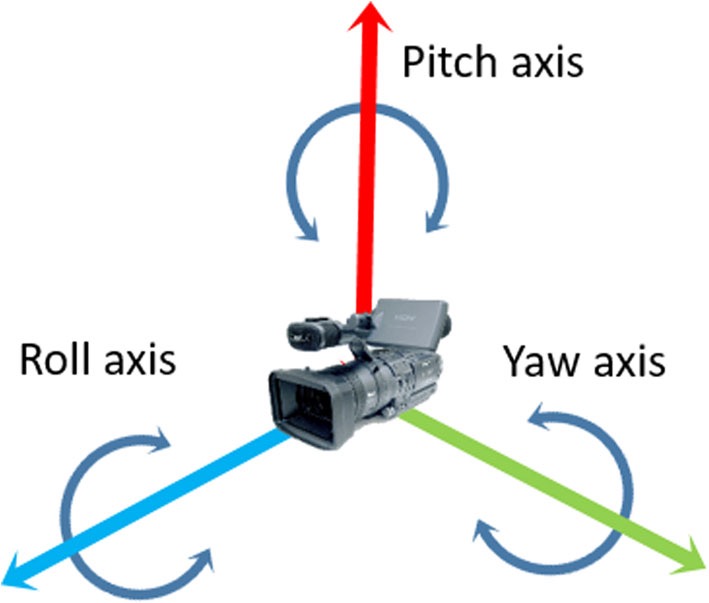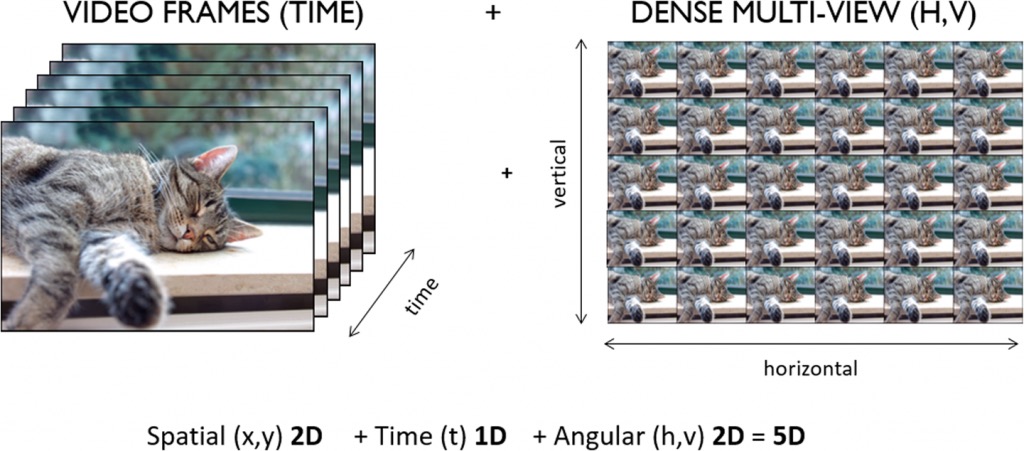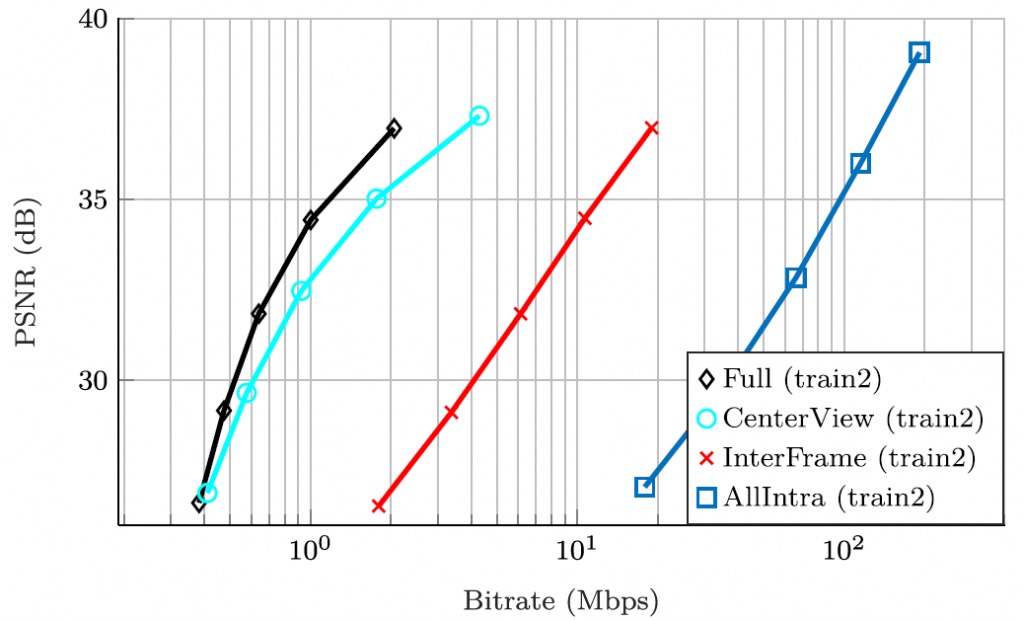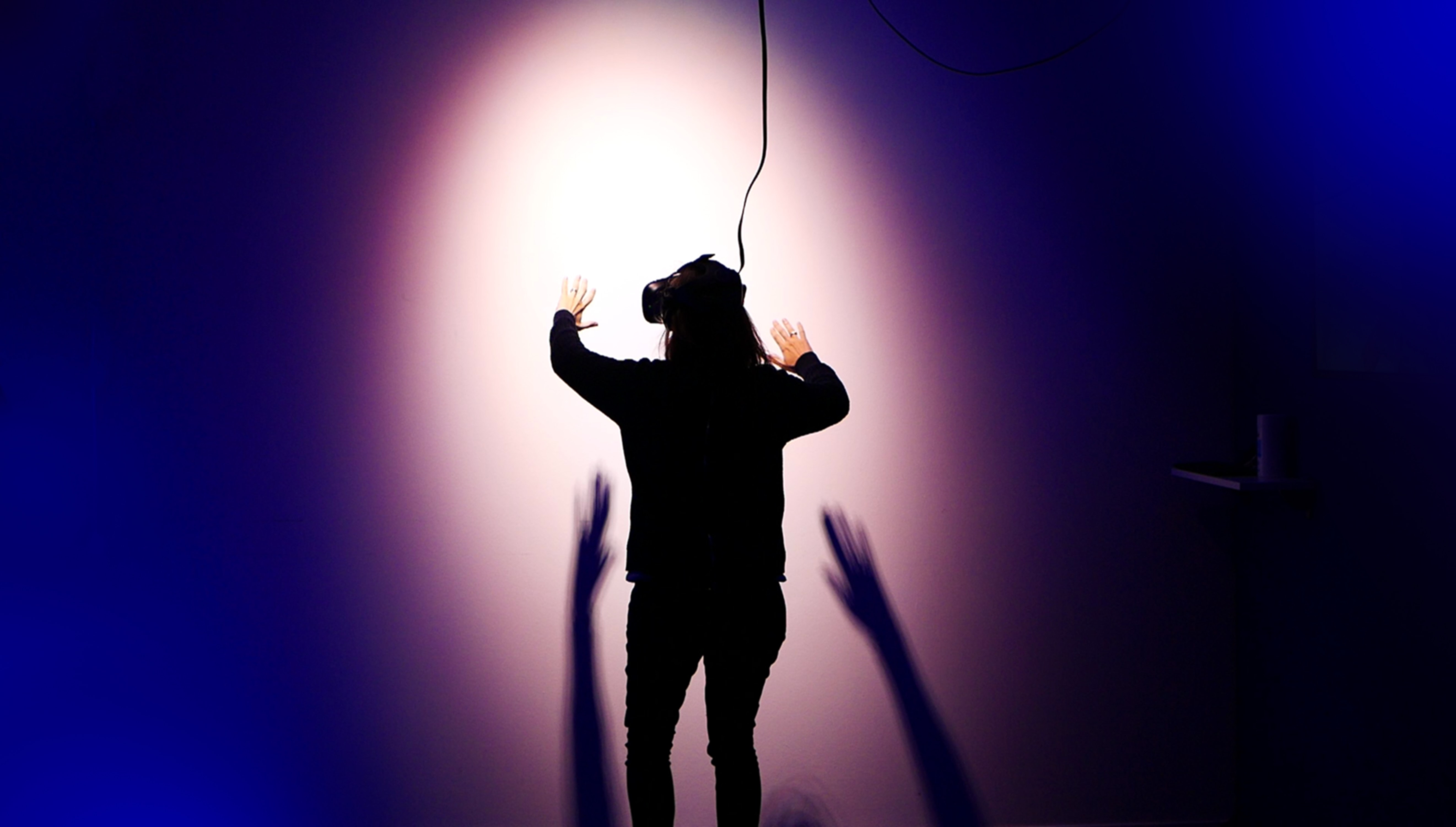Our article with the title “Random access prediction structures for light field video coding with MV-HEVC” was published in Multimedia Tools and Applications. The article focuses on exploring prediction structures that can enable random access when compressing light field video with MV-HEVC. Light field video promises to deliver the required six degrees of freedom (6DoF) for natural scenes in virtual reality.
 Fig. 1. A sense of 6 degrees-of-freedom (6DoF) around the perpendicular axes of the viewer is required for a fully immersive experience (3 rotational + 3 translational movements).
Fig. 1. A sense of 6 degrees-of-freedom (6DoF) around the perpendicular axes of the viewer is required for a fully immersive experience (3 rotational + 3 translational movements).
Random access is an important feature in video delivery, and a crucial requirement in multi-view video coding.The number of possible prediction structures that can be used by compression algorithms is unlimited and many of them are proposed in the literature. Although some of them are efficient in terms of compression ratio, they complicate random access due to the dependencies on previously decoded pixels or frames.
 Fig. 2. Representation of the dimensionality increase from a 2D image and 3D video to 4D light fields and 5D light field video, leading to complex multi-dimensional prediction structures.
Fig. 2. Representation of the dimensionality increase from a 2D image and 3D video to 4D light fields and 5D light field video, leading to complex multi-dimensional prediction structures.
The findings of this work indicate how the trade-off ranges between bandwidth and degree of random access. Specifically, one of the proposed structures offers performance improvements when compared to other structures in the literature (Full), while another proposed structure offers view random access capabilities with minimum sacrifices in bit rate (CenterView).
 Fig. 3. Rate-distortion comparison between the four different random access scenarios tested in this work.
Fig. 3. Rate-distortion comparison between the four different random access scenarios tested in this work.
More details about this work can be found here.









